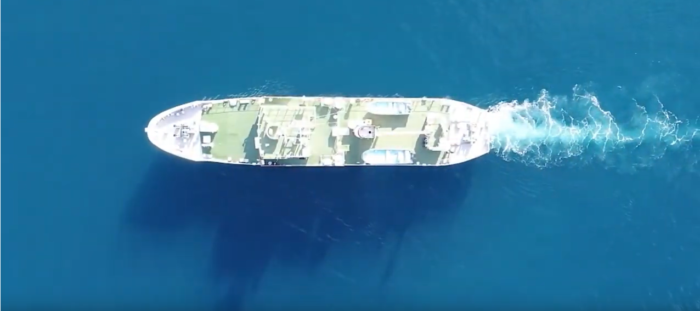Automation is slowly but steadily entering the maritime industry, offering new possibilities. New projects are emerging more and more often, showcasing that autonomous operations are starting to become a new reality for shipping.
One reason for the recent uptake is COVID-19, which has surely increased developments in the area, with maritime now carrying out many of its operations remotely.
IMO completes regulatory scoping exercise
In May 2021, the IMO MSC 103 completed a regulatory scoping exercise to analyze relevant ship safety treaties, in order to assess how Maritime Autonomous Surface Ships (MASS) could be regulated. The completion of the scoping exercise represents an important first step, aiming to pave the way to focused discussions to ensure that regulation will keep pace with technological developments.
The scoping exercise started in 2017 to determine how safe, secure and environmentally sound MASS operations might be addressed in IMO instruments. The outcome of the exercise highlighted a number of high-priority issues, said IMO, cutting across several instruments, that would need to be addressed at a policy level to determine future work.
In addition, common potential gaps and themes were also identified across several safety treaties regarding:
- Provisions containing manual operations and alarms on the bridge;
- Provisions related to actions by personnel (such as firefighting, cargoes stowage and securing and maintenance); watchkeeping;
- Implications for search and rescue;
- Information required to be on board for safe operation.
- Shipping automation projects
Considering the many benefits that automation offers, shipping has already started to move towards this direction and new projects are emerging more frequently, which have automation at their core. More specifically:
#1 Autonomous vessel completes Pacific crossing
In the beginning of July, the autonomous, Saildrone Surveyor arrived in Hawaii after its maiden voyage from San Francisco to Honolulu. During the 28-day voyage, the Saildrone Surveyor sailed 2,250 nautical miles and mapped 6,400 square nautical miles of seafloor. The vessel used renewable wind and solar energy for its primary power source. The data it collects will help address issues impacting the world including climate change, offshore renewable energy, natural resource management, and maritime safety.
Sensing, tracking, simultaneous real-time monitoring on ship and shore, artificial intelligence, machine learning, virtual engineering and augmented reality are just some of the technologies that now facilitate new strategies in ship operation. -ONE SEA
#2 MOL uses AI for its car carrier fleet
MOL started the operation of a new support system for car carrier allocation planning based on mathematical optimization. More specifically, in cooperation with Professor Shunji Umetani of Osaka University, MOL developed an algorithm that elicits the optimal allocation plan from an enormous number of combinations using mathematical optimization, and started operation of a system based on the algorithm.
The Introduction of the system enables speedy decision making and greater flexibility in meeting changes in transport demand. In addition, the improvement of fleet-wide efficiency reduces fuel consumption per unit transported, reducing the environmental impact of fleet operation. However, this is not the only automation project MOL has launched, as in June, MOL and Autonomous Control Systems Laboratory announced the success of a demonstration test using a flying drone to inspect the hold of an MOL-operated coal carrier.
#3 Europe’s first autonomous ship training centre
The Royal Navy, SeaBot XR, and the United Kingdom’s National Oceanography Centre (NOC) joined forces in order to create Europe’s first training and development centre, dedicated to supporting maritime’s digital transition.
As explained, Europe’s first maritime operations and training centre for robotic vehicles will future-proof training for vessel operations. The partners launched this project after identifying that the requirements for marine robotics training are very different to those which exist in the maritime training sector today, and the training facilities required do not currently exist within Europe.To address this gap, a competence-based curriculum is being created specifically for autonomous and remote vessel surface and sub-surface operations, to ensure a workforce has the necessary proficiencies to operate vessels.
How automation affects shipping
A white paper from the One Sea Ecosystem outlined the significant contribution autonomous ship technology can make to improve maritime safety. According to the report, it is now widely accepted that automation, real-time connectivity, sensors, the cloud, data analysis and remote monitoring will have a growing impact on the maritime sector and that their adoption is likely to accelerate further.
Moreover, some ships will be equipped for autonomous operation in which systems can not only be programmed but will also be capable of ‘thinking for themselves’. In other words, they will be able to identify potential hazards or obstacles to achieving a certain aim and, in light of that, take a different approach or strategy. However, automation does not pose a threat to seafarers’ jobs, but it demands new solutions that require a new skill sets of seagoing personnel. And to reflect these developments, the report notes that “it is fair to say that a new regulatory framework is now urgently required.”




























































